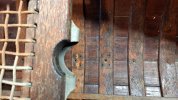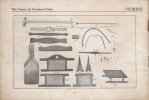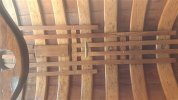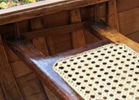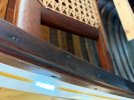Howie
Wooden Canoes are in the Blood
I've just completed this Morris I got back in May. It's a 17ft Model C type 1, #14067, circa 1916. In this Morris the ribs fit into pockets milled into the inner rails, but happily the rails do not have the cracks at these pockets that often bedevil Morris's. It has a floorboard rack as well as (what I assume is) a Morris paddle.
Original mahogany seats, decks and thwarts. I had to make new rail caps and sides - they are cherry. I used matte varnish for all the interior items except for the mahogany parts which have a gloss finish.




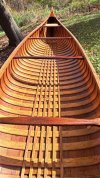


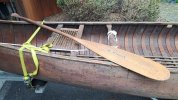
Original mahogany seats, decks and thwarts. I had to make new rail caps and sides - they are cherry. I used matte varnish for all the interior items except for the mahogany parts which have a gloss finish.









